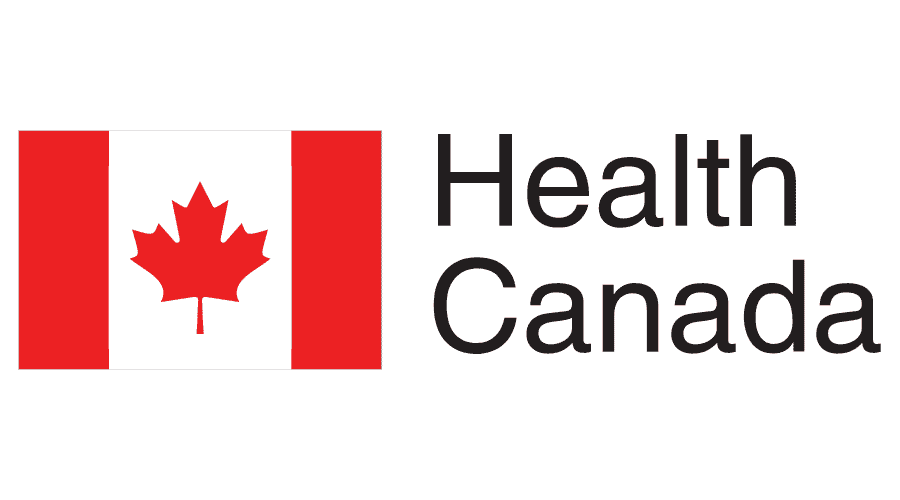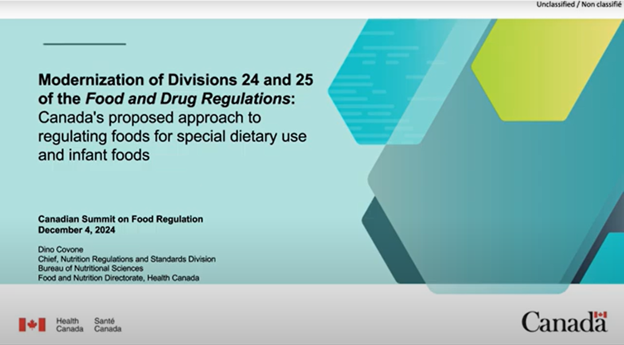Introduction:
In an era of unprecedented nutritional science and technological innovation, regulatory frameworks must evolve to protect consumer health, drive industry innovation, and respond to rapidly changing dietary landscapes. The Canadian food regulatory system stands at a critical inflection point, preparing to undertake the most comprehensive modernization of its food regulations since the 1970s. This transformative approach represents more than a bureaucratic update—it’s a strategic reimagining of how we understand, regulate, and innovate within the nutritional ecosystem.
Executive Summary:
The Canadian food regulatory landscape is undergoing a transformative modernization, representing the most significant update to Division 24 and 25 of the Food and Drug Regulations since the 1970s. This comprehensive whitepaper provides an in-depth analysis of the proposed changes, their implications, and strategic considerations for industry stakeholders.
Key Transformation Highlights:
– Comprehensive Regulatory Restructuring: Replacing outdated frameworks with a risk-based, scientifically informed approach
– Enhanced Consumer Protection: Implementing more rigorous oversight for vulnerable populations
– Industry Innovation Catalyst: Creating flexible frameworks that encourage nutritional research and product development
– Global Alignment: Bringing Canadian regulations into closer synchronization with international best practices
Strategic Implications:
This modernization represents a multifaceted approach that balances consumer safety, industry innovation, and scientific progress. Manufacturers, nutritional scientists, and healthcare professionals will need to develop sophisticated strategies to navigate the new regulatory landscape effectively.
Potential Impact Zones:
– Product Formulation
– Supply Chain Management
– Nutritional Research
– Regulatory Compliance
– Market Access Strategies
Strategic Imperatives for Stakeholders:
1. Proactive Adaptation: Develop comprehensive understanding and strategic response plans
2. Continuous Learning: Invest in regulatory intelligence and scientific expertise
3. Collaborative Approach: Engage constructively with regulatory development process
4. Innovation-Driven Compliance: View new regulations as opportunities for differentiation
- Regulatory Context and Historical Perspective
Comprehensive Overview: This section provides a critical archaeological exploration of Canada’s food regulatory landscape, tracing the evolutionary path from the 1970s to the present. We’ll dissect the original regulatory framework’s foundational assumptions, examining how societal, technological, and nutritional understanding has dramatically transformed since the regulations’ inception.
Key Exploration Points:
- Historical regulatory development timeline
- Technological and scientific shifts
- Emerging nutritional science paradigms
- Global regulatory comparative analysis
- Limitations of legacy regulatory approaches
Analytical Lens:
- Sociological perspective on regulatory evolution
- Technological innovation impact assessment
- Consumer health protection trajectory
- Proposed Regulatory Transformation
Strategic Deconstruction: A forensic analysis of Health Canada’s proposed regulatory restructuring, revealing the philosophical and practical innovations that will reshape the nutritional regulatory ecosystem. This section goes beyond surface-level changes to explore the fundamental reimagining of how special dietary purpose foods are conceptualized, developed, and brought to market.
Transformation Dimensions:
- Paradigm shift from age-based to risk-based categorization
- Enhanced consumer protection mechanisms
- Scientific evidence-driven regulatory framework
- Flexibility for technological and nutritional innovation
- Global regulatory alignment strategies
Strategic Implications:
- Regulatory agility
- Innovation-friendly compliance frameworks
- Proactive risk management approach
- Comprehensive Product Category Analysis
Taxonomical Exploration: A meticulous dissection of product categorization, providing manufacturers and stakeholders with an unprecedented level of clarity about the proposed regulatory landscape. This section serves as a strategic mapping of how different nutritional products will be classified, regulated, and managed.
Category Deep Dive:
- High-Risk Product Stratification
– Infant Nutrition
– Medical Foods
– Total Diet Replacement Products - Lower-Risk Product Ecosystem
– Gluten-Free Innovations
– Conventional Infant Nutrition
– Nutritional Supplement Landscape
Analytical Frameworks:
- Risk profile assessment
- Nutritional complexity mapping
- Consumer vulnerability analysis
- Regulatory Oversight Innovations
Governance Transformation: An in-depth exploration of the proposed oversight mechanisms that represent a quantum leap in regulatory approach. This section reveals the sophisticated strategies designed to ensure product safety, manage potential shortages, and maintain exceptional quality standards.
Oversight Innovation Domains:
- Shortage Reporting Mechanisms
- Exceptional Importation Protocols
- Stop Sale Requirement Frameworks
- Pre-Market Authorization Strategies
- Real-Time Regulatory Intelligence Systems
Strategic Capabilities:
- Proactive risk mitigation
- Dynamic regulatory response
- Transparent communication channels
- Compositional Requirements Framework
Nutritional Science Deconstruction: A comprehensive scientific analysis of the proposed nutritional standards, breaking down the intricate rationale behind macronutrient and micronutrient guidelines. This section bridges scientific research, regulatory strategy, and consumer health protection.
Compositional Exploration Vectors:
- Age-Specific Nutritional Requirements
- Macronutrient Precision Engineering
- Micronutrient Optimization Strategies
- Scientific Evidence Integration
- Global Nutritional Standard Alignment
Research Methodological Approach:
- Evidence-based standard development
- Interdisciplinary nutritional science
- Consumer health optimization
- Labeling and Transparency Requirements
Communication Ecosystem: An advanced examination of proposed labeling standards that transcends traditional compliance, positioning transparency as a strategic consumer engagement tool. This section explores how enhanced information sharing can empower consumers and drive industry accountability.
Transparency Dimensions:
- Comprehensive Product Information Strategies
- Consumer-Centric Communication Design
- Nutritional Literacy Enhancement
- Digital Labeling Innovations
- Psychological Trust-Building Mechanisms
Strategic Communication Frameworks:
- Clarity as competitive advantage
- Trust through transparency
- Informed consumer empowerment
- Implementation Roadmap
Strategic Temporal Mapping: A detailed navigation of the proposed regulatory transformation timeline, providing stakeholders with a comprehensive understanding of key milestones, preparation requirements, and strategic adaptation windows.
Implementation Trajectory:
- Consultation Phase Dynamics
- Regulatory Draft Development
- Stakeholder Engagement Windows
- Phased Implementation Strategies
- Continuous Improvement Mechanisms
Adaptation Strategy:
- Proactive preparation
- Flexible response capabilities
- Strategic milestone tracking
- Strategic Implications for Industry
Ecosystem Transformation: A holistic assessment of broader strategic considerations for manufacturers, researchers, and healthcare professionals navigating the new regulatory landscape.
Strategic Adaptation Domains:
- Product Reformulation Strategies
- Supply Chain Resilience
- Regulatory Intelligence Investment
- Innovation Acceleration
- Competitive Differentiation Approaches
Organizational Capabilities:
- Regulatory agility
- Innovation-driven compliance
- Strategic foresight
- Potential Challenges and Mitigation Strategies
Risk Landscape Mapping: A pragmatic, nuanced assessment of potential implementation challenges, coupled with sophisticated, proactive management recommendations.
Challenge Exploration:
- Regulatory Complexity Navigation
- Economic Impact Mitigation
- Technological Adaptation
- Organizational Change Management
- Global Competitive Positioning
Mitigation Framework:
- Scenario planning
- Adaptive strategy development
- Continuous learning approach
- Future Outlook
Speculative Strategic Projection: A forward-looking exploration grounded in current scientific and regulatory trends, revealing potential trajectories for nutritional science, product development, and consumer health.
Future Exploration Vectors:
- Technological Innovation Trends
- Regulatory Convergence
- Nutritional Science Advancements
- Consumer Behavior Shifts
- Global Health Ecosystem Transformation
Visionary Perspective:
- Anticipatory strategy
- Adaptive innovation
- Holistic ecosystem understanding
Conclusion:
The proposed regulatory modernization is not merely an administrative exercise but a strategic transformation of Canada’s nutritional ecosystem. By creating a more adaptive, scientifically grounded framework, Health Canada is positioning the country at the forefront of global nutritional innovation and consumer protection.



